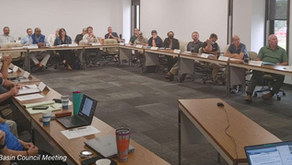A 5-Year Autopsy: 2019 Asset Management and Reliability Predictions, Then and Now
- JD Solomon
- Jun 18, 2024
- 4 min read

In 2019, I predicted five asset management and reliability trends. How did I do? Five years later, I can cite after-action review, milestone review, forecast reconciliation, or forecast validation (whatever you wish to call the look back) as essential for maintaining the reliability and accuracy of expert predictions, improving methodologies, ensuring accountability, and adapting to new information and changes over time. However, in this case, the best test of the prediction was that I was about to launch JD Solomon, Inc. – in other words, putting my money where my mouth was.
The Value of Reviews
Milestone reviews analyze the pieces of the whole to determine what has happened, but they should not make team members feel like they were the ones on the slab. After-action reviews, which may only occur when something goes bad, should be the same. Forecast reconciliations or validations are usually not done because our predictions (expert opinions) usually stink.
However, there is no way to improve if we cannot honestly look back effectively.
These are two brief articles from the past related to project management.
Asset Management Predictions
These were my Top 5 in 2019.
Growing Focus on Big Data and Data Trending
These are a few of the things I predicted in this category.
Better, more Integrated data management systems.
More affordable remote operations and built-in testing.
More affordable condition assessment equipment.
Growing focus on big data and data trending.
Overall, not bad. But, like the rest of the world, I missed the rapid emergence of artificial intelligence.
Equipment Doesn’t Last as Long
By design, modern equipment does not last longer than promised. These were the predictions.
New mechanical and electrical equipment is being designed to a tighter performance standard and failing "sooner."
Facility owners have not associated similar behavior of home electronics and cell phones with equipment in their plants.
The gap in reality and understanding shorter equipment lives will create, especially for budgeting.
The predictions remain valid and are growing concerns. There is a good argument that today’s equipment is techier and the plug-and-play aspects are positive in a world where maintenance skills are trending down. However, replacing more things sooner than historically needed will continue to produce budgeting and communication challenges.
The prediction has proven true, but more selectively felt than I expected.
There’s A Skilled Labor Shortage Out There!
There were indications of this one, and COVID drove some deeper understanding of the harsh future realities of the skilled labor shortage.
Fewer of the newer generation want to turn wrenches, and fewer schools teaching it.
The new generation of maintenance workers will need to be more computer-savvy and more data-oriented.
The skilled labor shortage – predicted by some for over a decade – is here.
This prediction turned out to be true.
Just-In-Time Spares and Contracted Maintenance
The drive for greater manufacturing efficiency and fewer skilled workers was a big driver behind this prediction in 2019. It played out, and supply chain problems in the aftermath of COVID made it worse.
Shorter and fewer outage periods for many industries.
Higher reliance on contract maintenance.
More attention on parts and warehouse optimization and the gap between desire and reality.
The prediction turned out to be true.
The People Side Will Struggle
Similar levels of maintenance-type training (excluding Health & Safety), although equipment is generally getting more sophisticated
Not enough time to do the data entry and root cause analysis that is more expected
Communication is not getting any easier, although we have more ways to do it.
More and more companies have abandoned hiring for skills and are now hiring for competencies. That means more training. The pressure from intergenerational communication among five generations in the workforce is just now being seen as older, skilled workers embark on second and third careers.
This prediction has been true, but slower in its impact than I thought.
Some New Challenges
So, what are the top five challenges for asset management over the next five years? What am I talking about on the speaking circuit? Where am I positioning my business?
I'll share those thoughts in another upcoming article. For now, I'll say most of the previous five will still be in play. Add a few things into the mix, like remote work and flexible workplaces, ESG (Environmental, Social, and Governance) goals, sensors and smart buildings, software integration, and government Incentives. Some of these subcategories are existing ones, while others emerge as their own.
Summary
The core concerns from 2019 persist, and new ones are taking hold. We are at a pivotal time in physical asset management. The nexus of technology, AI, and the new workforce makes it so. More impactfully, the rate of play will continue accelerating. Facility managers must stay agile and informed to navigate these evolving trends effectively.
JD Solomon Inc. provides solutions for program development, asset management, and facilitation at the nexus of facilities, infrastructure, and the environment. Subscribe for monthly updates related to our firm.
JD Solomon is the founder of JD Solomon, Inc., the creator of the FINESSE fishbone diagram, and the co-creator of the Solomon-Oldach Asset Prioritization (SOAP) Method. He is the author of Communicating Reliability, Risk & Resiliency to Decision Makers: How to Get Your Boss’s Boss to Understand and Facilitating with FINESSE: A Guide to Successful Business Solutions.




댓글